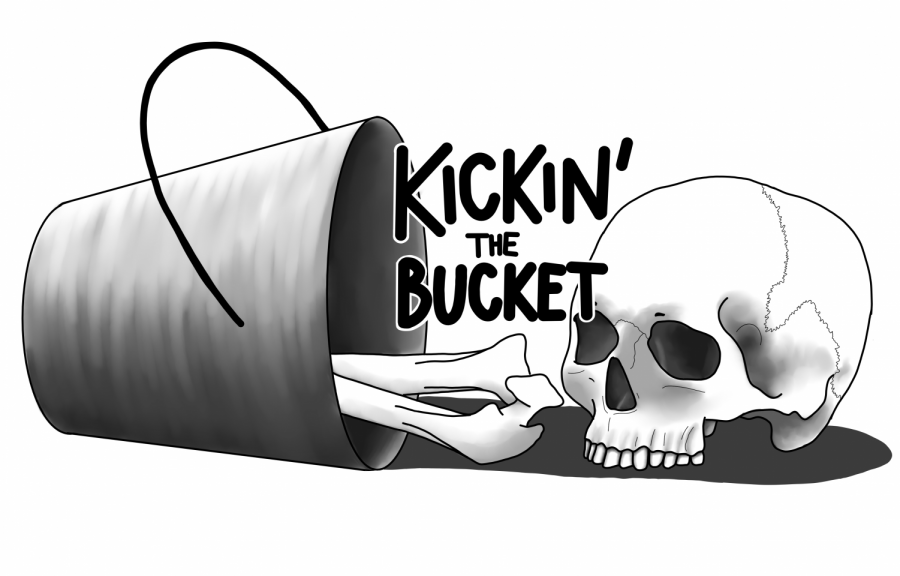Kickin’ The Bucket | The line between life and death
Kickin’ The Bucket is a bi-weekly blog about death, dead things and the people who work with them.
November 19, 2021
For being a seemingly black-and-white phenomenon, the line between life and death can be significantly blurred.
In certain situations, death is obvious. Decomposition, hypostasis — when blood collects at lower parts of the body due to gravity — or rigor mortis all make someone look pretty dead. But in other situations, such as when patients are put on ventilators, “death” seems to take on a subjective form.
A person who is brain-dead — meaning the brain is no longer able to function independently — is legally confirmed as dead. Someone who has severe brain damage, is in a vegetative state and requires life support to help them breathe is considered “brain-dead.”
But with new technology and medications, the body can go on without the brain. Ventilators can continue to circulate oxygen throughout the body, dialysis machines can filter blood, medications can mimic hormones and chemicals. If given nutrients, cells and organs will continue to function, wounds can heal. Would brain death still count as death, then?
Blair Bigham, a resident emergency doctor, recounted his first encounter with the blurred line of life and death after the passing of a young boy.
“If someone is on life support, during all that time, blood will continue to circulate in the body and energy will continue to be created,” Bigham wrote. “When, then, did that boy die? Was he dead, right then and there, when we made that small observation of his two gaping-wide pupils, black as night? Was it the next morning around 10, when we formally declared death? Or was it two days after that, when a surgeon cut out his heart and raced it off to a stranger, who would later become a transplant survivor?”
While medical tests may physiologically clarify the line between life and death for doctors, many still disagree with the definition of death. Different definitions of death can mean someone is pronounced dead in one area but not another. Many believe death has to do with heart cessation instead of brain cessation. Some believe death has to do with cerebrum cessation — the part of the brain responsible for consciousness, thoughts and feelings and personality.
Personal, cultural and religious beliefs have pushed family members to fight the diagnosis of brain death in court.
Doctors declared Jahi McMath, a 13-year-old girl, as brain-dead, but her family fought to keep her on life support for five years. During her time on life support, McMath was able to move her fingers and menstruate.
Julia and Joseph Quinlan filed a lawsuit in 1975 after their daughter suffered irreversible brain damage, and the doctor refused the parents’ request to disconnect Karen from her respirator and let her die “with grace and dignity.” In memory of their daughter, Julia and Joseph Quinlan founded the Karen Ann Quinlan Hospice Foundation.
Religions such as Haredi Judaism and Buddhism disagree with the definition of brain death as death. New Jersey is the only state in the U.S. to allow for religious exemptions to and continued health insurance coverage to brain death.
Overall, death is a very personal and difficult thing to experience, and how someone chooses to grieve is none of my business. If I or my family members were deemed brain-dead, I would personally choose to terminate life support — but my decision should not affect what others wish to do with their loved ones.








